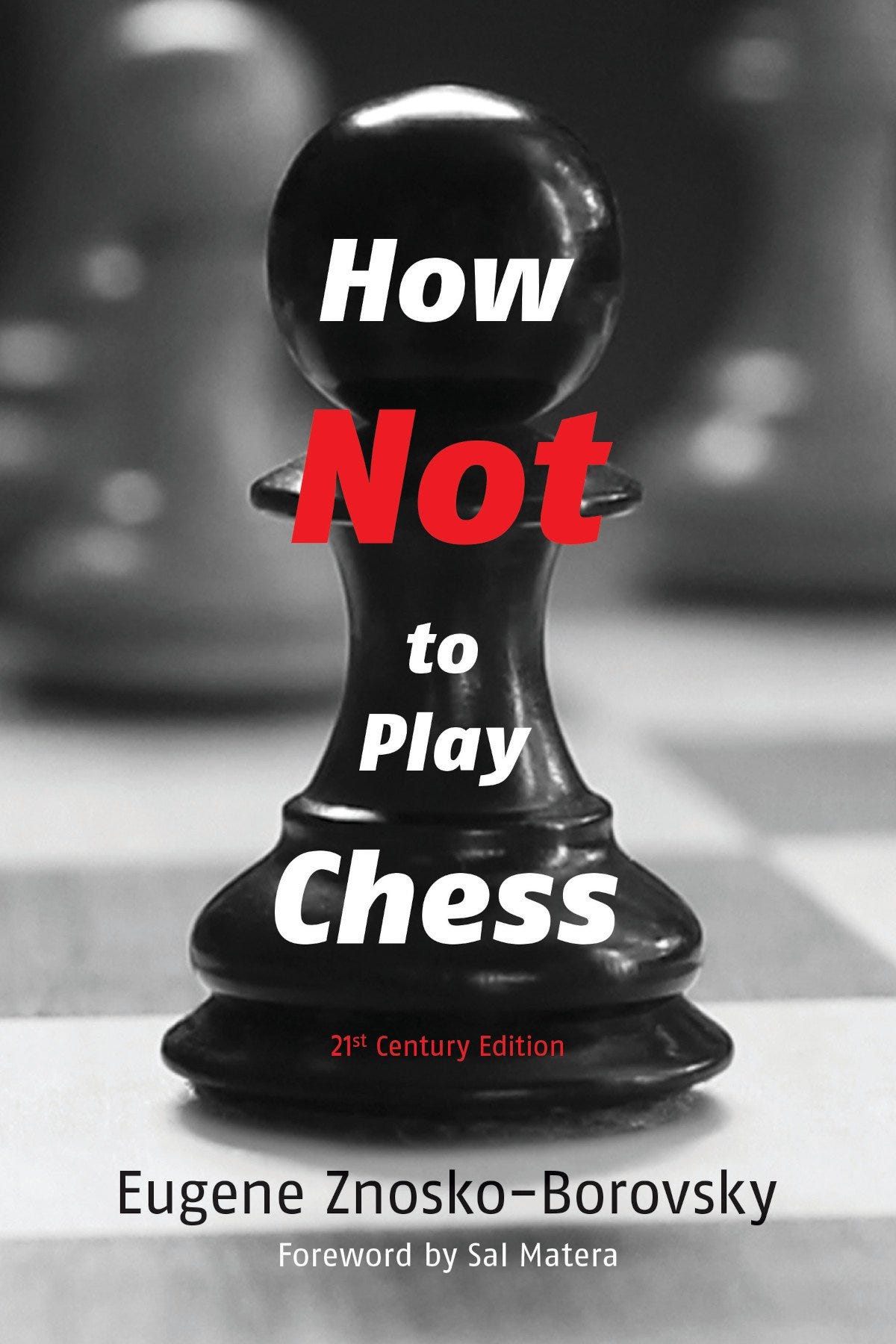Book Review: How Not To Play Chess by Eugene Znosko-Borovsky
Russell Enterprises reprints an old classic.
Thanks to Russell Enterprises for a review copy of this book.
How Not to Play Chess is a short and quick read, with bullet points that are dedicated at most a few pages. It’s an old classic from the Wild West era of chess book publishing where My System reigned supreme. It contains a lot of standard advice that is readily available now, but somehow this feels much more pure than a YouTube video ever would. Probably this is due to the lack of engine analysis, instead there is principle upon principle, with position after position, explaining said principle.
Eugene Znosko-Borovsky is a player whose name will show up when you study players like Alekhine and Capablanca. He never reached the peak of the world’s players, but was certainly able to pick up some wins on occasion; he is well-known as a chess book author. Compared to his other books, How Not To Play Chess is readily primed for amateurs and beginners. I think of this book as full of advice that a 1600-rated player would probably give to his 800-1300-rated friends. Nowadays this kind of general advice is freely available online, but to find it all in a short booklet like this for $15 is worthwhile and, depending on your taste, possibly still better. Additionally, the time period in which this book was written was when the game examples were just much more clear because the skill gap between the best players and their opponents was just so wide. Ergo in many cases the points are illustrated simply and obviously — it’s easy to see how things go wrong or right based on adhering to the principles expounded therein.
As the title of the book is apophatic, the given advice is also usually given in negatives. For example: “Do not play inconsistently by first pursing one plan, then another”; “Do not leave your pieces on weak squares”, etc. There are plenty of diagrams in this booklet, and with a bit of persistence the reader probably does not require a board; read closely and pay attention to the examples and you’ll get what he means. One potential complaint about this book applies to books like its contemporary My System as well: the language sounds a bit archaic to the modern reader. Much like how modern chess is very concrete and earlier chess was built on principle, sometimes Znosko-Borovsky comes off a tad vague, and this still comes through with a more modern translation.
I think the greatest strength of the book is its brevity. In the form of a small paperback, it’s only 112 pages long, and serves a very distilled meal of generalized yet strong chess advice. This kind of book is what players even 60 years ago would have read as children learning to play the game. While it’s not quite as well-known today, it’s still a worthwhile read, especially for players in the aforementioned 800-1300-rated range. And it won’t take you too long either. Lastly, I think coaches may benefit from the advice given, as it gives them a nice way to succinctly pass on this knowledge to their students.
This is the kind of book I would give to others who wanted basic principles spelled out to them in a didactic but brief manner. Not a must-have, but one that I would seriously consider recommending to others for a multitude of reasons as given above. I’m glad Russell Enterprises chose to update the translation and reprint this one for younger generations to read.


